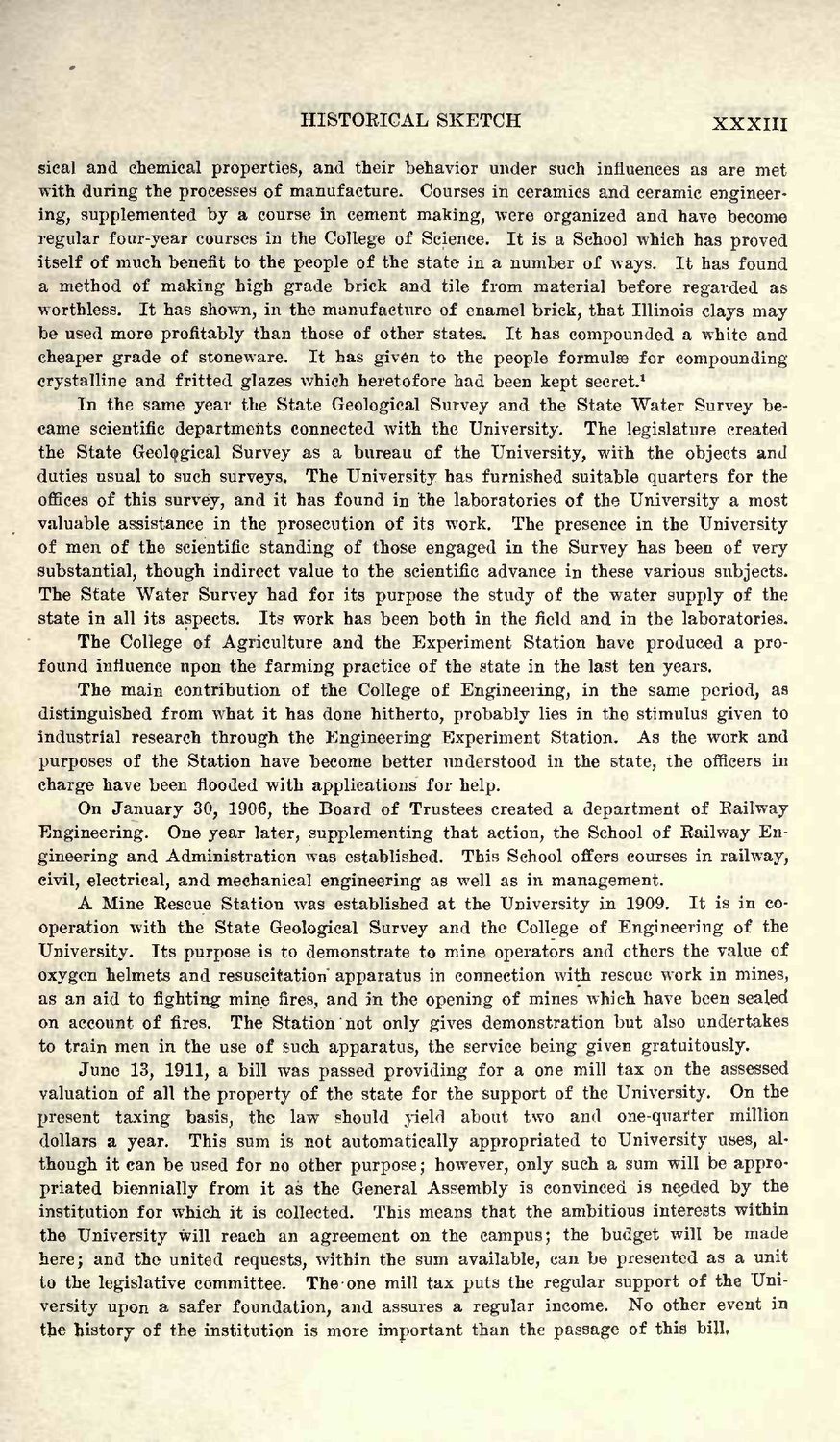| |
| |
Caption: Book - Early History of University (1916)
This is a reduced-resolution page image for fast online browsing.

EXTRACTED TEXT FROM PAGE:
HISTORICAL SKETCH XXXIII sieal and chemical properties, and their behavior under such influences as are met with during the processes of manufacture. Courses in ceramics and ceramic engineering, supplemented by a course in cement making, were organized and have become regular four-year courses in the College of Science. I t is a School which has proved itself of much benefit to the people of the state in a number of ways. I t has found a method of making high grade brick and tile from material before regarded as worthless. I t has shown, in the manufacture of enamel brick, that Illinois clays may be used more profitably than those of other states. I t has compounded a white and cheaper grade of stoneware. I t has given to the people formulae for compounding crystalline and fritted glazes which heretofore had been kept secret. 1 I n the same year the State Geological Survey and the State Water Survey became scientific departments connected with the University. The legislature created the State Geological Survey as a bureau of the University, with the objects and duties usual to such surveys. The University has furnished suitable quarters for the offices of this survey, and it has found in the laboratories of the University a most valuable assistance in the prosecution of its work. The presence in the University of men of the scientific standing of those engaged in the Survey has been of very substantial, though indirect value to the scientific advance in these various subjects. The State Water Survey had for its purpose the study of the water supply of the state in all its aspects. I t s work has been both in the field and in the laboratories. The College of Agriculture and the Experiment Station have produced a profound influence upon the farming practice of the state in the last ten years. The main contribution of the College of Engineering, in the same period, as distinguished from what it has done hitherto, probably lies in the stimulus given to industrial research through the Engineering Experiment Station. As the work and purposes of the Station have become better understood in the state, the officers iii charge have been flooded with applications for help. On January 30, 1906, the Board of Trustees created a department of Railway Engineering. One year later, supplementing that action, the School of Railway Engineering and Administration was established. This School offers courses in railway, civil, electrical, and mechanical engineering as well as in management. A Mine Rescue Station was established a t the University in 1909. I t is in cooperation with the State Geological Survey and the College of Engineering of the University. I t s purpose is to demonstrate to mine operators and others the value of oxygen helmets and resuscitation' apparatus in connection with rescue work in mines, as an aid to fighting mine fires, and in the opening of mines which have been sealed on account of fires. The Station not only gives demonstration but also undertakes to train men in the use of such apparatus, the service being given gratuitously. Juno 13, 1911, a bill was passed providing for a one mill tax on the assessed valuation of all the property of the state for the support of the University. On the present taxing basis, the law should yield about two and one-quarter million dollars a year. This sum is not automatically appropriated to University uses, although it can be used for no other purpose; however, only such a sum will be appropriated biennially from it as the General Assembly is convinced is needed by the institution for which it is collected. This means that the ambitious interests within the University will reach an agreement on the campus; the budget will be made here; and tho united requests, within the sum available, can be presented as a unit to the legislative committee. The one mill tax puts the regular support of the University upon a safer foundation, and assures a regular income. No other event in the history of the institution is more important than the passage of this bill.
| |